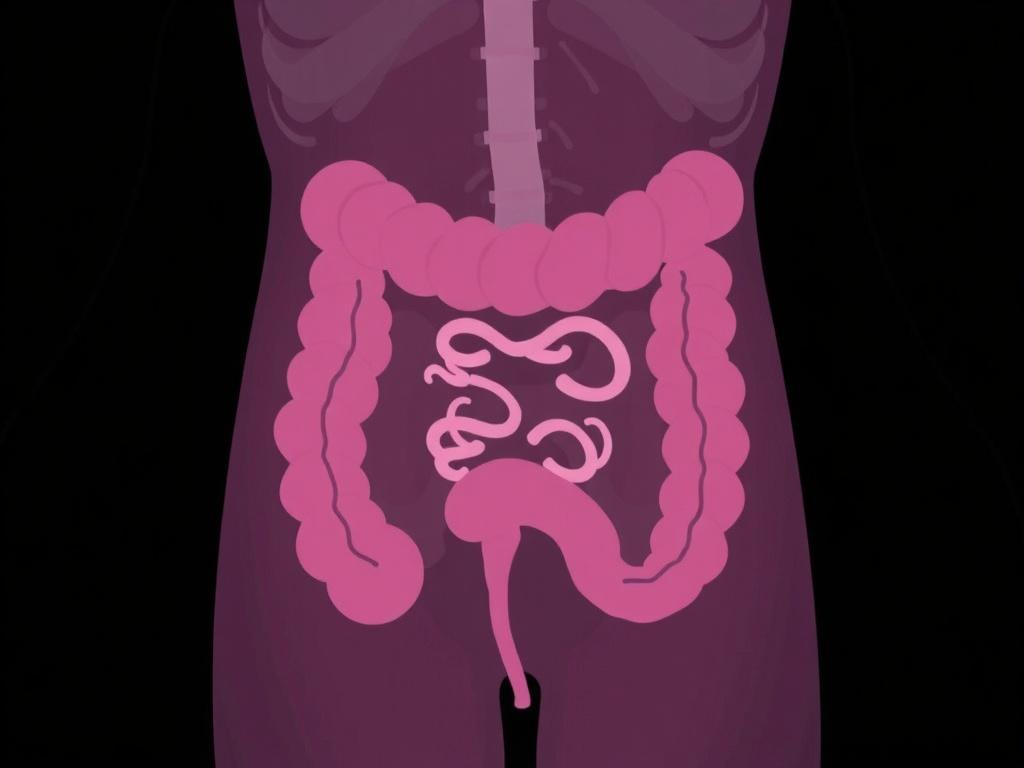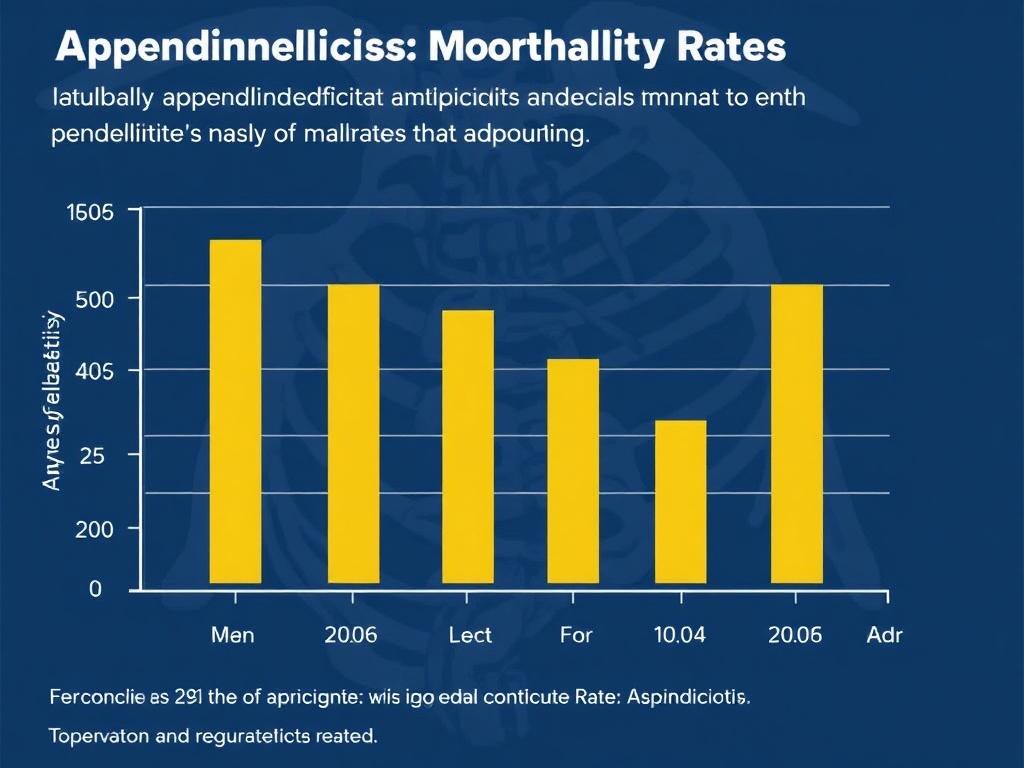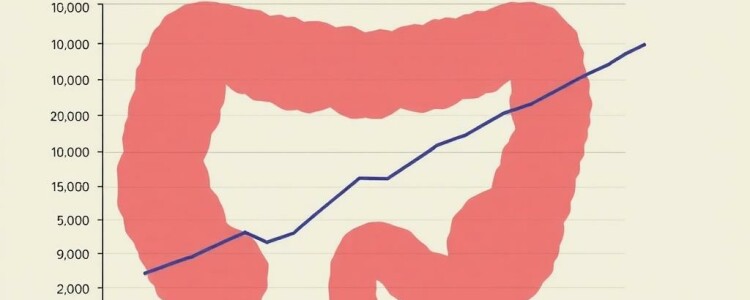Appendicitis is a medical condition that most people have heard of, but not everyone truly understands the risks involved, especially when it comes to appendicitis mortality rates. This condition, which involves inflammation of the appendix, can become life-threatening if not treated promptly. In this article, we’ll explore everything you need to know about appendicitis mortality rates—from what causes them, to how they have changed over time, and what factors influence the likelihood of survival. By the end, you’ll have a clear picture of how appendicitis impacts lives worldwide and why timely diagnosis and treatment remain crucial.
What Is Appendicitis and Why Does It Matter?
Appendicitis is the inflammation of the appendix, a small, tube-shaped pouch attached to the large intestine. Although the appendix itself does not have a known critical function, when it becomes inflamed, it can cause severe pain and potentially dangerous complications. If left untreated, an inflamed appendix can rupture, leading to a serious infection called peritonitis or an abscess formation. These complications are significant factors behind appendicitis mortality rates.
Generally, appendicitis is considered a surgical emergency. Emergency removal of the appendix, called an appendectomy, is the most common treatment and usually has excellent outcomes when performed early. However, delays in diagnosis or access to care can result in worse prognoses and increased mortality risk. Therefore, understanding appendicitis mortality rates sheds light on the critical importance of recognizing symptoms early and accessing medical care promptly.
The Historical Perspective: How Appendicitis Mortality Rates Have Changed

In the early 20th century, appendicitis was often fatal. Before the advent of modern surgery and antibiotics, mortality rates were startlingly high. Estimates suggest that appendicitis mortality rates in the early 1900s reached as high as 25%. Many lives were lost due to ruptured appendices and the resulting infections.
Fast forward to today, advances in surgical techniques, anesthesia, antibiotics, and overall hospital care have significantly reduced appendicitis mortality rates worldwide. In developed countries, mortality rates have dropped to less than 1% in most cases. This dramatic improvement reflects how medical progress saved millions of lives, yet disparities still exist globally.
Appendicitis Mortality Rates Around the World
Despite improvements, appendicitis mortality rates vary between countries, mostly depending on healthcare infrastructure and access. In well-resourced countries with advanced medical care, mortality rates hover below 0.2%. In contrast, lower-income regions with limited access to emergency surgical care can experience mortality rates several times higher.
Here’s a simplified table showing estimated appendicitis mortality rates by region:
| Region | Estimated Appendicitis Mortality Rate |
|---|---|
| North America | 0.1% – 0.2% |
| Europe | 0.1% – 0.3% |
| Asia (Developed) | 0.2% – 0.5% |
| Asia (Developing) | 1% – 5% |
| Africa | 2% – 10% |
| Latin America | 0.5% – 3% |
These numbers are influenced by many factors such as timely diagnosis, availability of surgical facilities, and the use of antibiotics to manage infection. It’s clear that even today, appendicitis mortality rates expose health inequities in different areas.
Key Factors Influencing Appendicitis Mortality Rates

Understanding what drives appendicitis mortality rates is crucial to improving outcomes. Several interrelated factors play important roles, including:
- Time to Diagnosis: Delay in identifying appendicitis significantly increases the risk of appendix rupture, leading to higher mortality rates.
- Access to Healthcare: Immediate access to surgical care tends to reduce mortality rates. Regions lacking emergency care often see higher death rates.
- Patient Age and Health Status: Very young children, elderly individuals, and those with compromised immune systems tend to have higher mortality risk.
- Severity and Complications: Cases presenting with rupture and peritonitis have higher mortality compared to uncomplicated appendicitis.
- Quality of Surgical and Postoperative Care: Skilled surgeons, use of antibiotics, and proper postoperative monitoring all contribute to reduced mortality.
A common pattern emerges: the quicker appendicitis is diagnosed and treated before complications arise, the lower the risk of dying from this condition.
The Role of Delay in Appendicitis Mortality Rates
One of the most consistent predictors of appendicitis mortality rates is delay in treatment. When symptoms are ignored or misdiagnosed, the inflamed appendix may rupture. Once rupture occurs, bacteria spread into the abdominal cavity, causing widespread infection. This situation dramatically increases the risk of death unless treated aggressively and in a timely manner.
Medical studies show that if appendicitis is treated within 24 to 48 hours of symptom onset, mortality rates are exceedingly low. However, delays extending beyond this window correlate with an exponential increase in mortality. This fact underlines the need for urgent evaluation when symptoms such as abdominal pain, nausea, and fever appear.
Symptoms and Diagnosis: Catching Appendicitis Early
Recognizing appendicitis symptoms is the first line of defense in reducing mortality rates. The classic symptoms include:
- Sudden pain starting near the belly button, shifting to the lower right abdomen
- Nausea and vomiting
- Loss of appetite
- Fever
- Abdominal swelling
However, symptoms can vary widely, especially in children, the elderly, and pregnant women, leading to diagnostic challenges.
Diagnosis often involves a combination of physical examination, blood tests to detect infection, and imaging studies like ultrasound or CT scans. Rapid and accurate diagnosis helps guide urgent surgical intervention, which ultimately lowers appendicitis mortality rates.
Treatment Options and Their Impact on Mortality
The standard treatment for appendicitis is an appendectomy—surgical removal of the appendix. This surgery can be performed via traditional open surgery or laparoscopically (minimally invasive), with very low mortality rates in modern practice.
In addition to surgery, antibiotics play a critical role in both preoperative and postoperative care. They help prevent or treat infections caused by the appendix rupture or surgery itself.
Interestingly, recent research has explored treating mild, uncomplicated appendicitis with antibiotics alone. While this approach shows promise in reducing surgical risks, its long-term effects on appendicitis mortality rates and recurrence are still being studied.
Comparing Mortality Based on Treatment Type
Here’s a comparison table showing estimated mortality differences based on chosen treatment and complication status:
| Treatment Type | Uncomplicated Appendicitis Mortality Rate | Complicated (Ruptured) Appendicitis Mortality Rate |
|---|---|---|
| Appendectomy (Surgery) | Less than 0.1% | 1% – 5% |
| Antibiotics Alone (Uncomplicated Cases) | Less than 0.5% | N/A (not standard for complicated cases) |
| No Treatment/Delayed Treatment | Varies, up to 10% or more | Up to 20% or higher |
The clear takeaway is that timely surgical care remains the gold standard in minimizing appendicitis mortality rates, especially once rupture is suspected.
Age and Appendicitis Mortality Rates: Who Is at Most Risk?

Appendicitis can affect people at nearly any age but tends to most commonly occur in children and young adults aged 10 to 30 years. Mortality rates differ significantly across age groups.
- Children: Typically have excellent survival rates when promptly treated, but younger children can experience diagnostic delays due to atypical symptoms.
- Adults: Generally low mortality rates, especially with access to care.
- Elderly: This group has the highest appendicitis mortality rates, often due to delayed diagnosis, coexistence of other illnesses, and reduced physiological resilience.
Overall, advanced age is considered a strong risk factor for increased appendicitis mortality rates. This fact calls for heightened awareness and faster intervention in older populations presenting with abdominal pain.
Appendicitis Mortality Rates in Different Populations and Conditions
Certain conditions and demographic factors affect appendicitis mortality rates beyond age and healthcare access. Some notable influences include:
- Gender: Appendicitis affects males slightly more than females, but mortality rates do not show major gender disparity.
- Pregnancy: Appendicitis during pregnancy poses unique challenges, such as diagnostic difficulty and surgical risks, which can temporarily raise mortality risks if not managed carefully.
- Immunocompromised Individuals: Patients with weakened immune systems (e.g., due to diabetes, HIV, or chemotherapy) face higher mortality risk.
- Rural vs Urban: People living in rural areas often exhibit higher appendicitis mortality rates due to limited access to emergency surgical services.
Understanding these nuanced factors helps clinicians prioritize care and prepare for potential complications.
How Public Health Initiatives Can Lower Appendicitis Mortality Rates
Lowering appendicitis mortality rates is not only a matter of surgical skill but also of public health education and infrastructure. Initiatives that aid this goal include:
- Education Campaigns: Raising awareness about appendicitis symptoms ensures people seek help early.
- Improving Healthcare Access: Investing in emergency surgical facilities, especially in underserved areas.
- Training Primary Care Providers: Enhancing early recognition and timely referral of appendicitis cases.
- Establishing Protocols: Developing guidelines for swift diagnosis and treatment helps reduce delays.
Such measures have been shown to reduce appendicitis mortality rates significantly.
The Future of Appendicitis Management and Mortality
Ongoing research continues to optimize appendicitis treatment with the goal of driving mortality rates even lower. Some promising areas include:
- Non-surgical Treatments: Further exploring the safety and effectiveness of antibiotics-alone therapy for select patients.
- Improved Diagnostic Tools: Enhanced imaging and biomarkers to detect appendicitis earlier and more accurately.
- Personalized Medicine: Tailoring treatment depending on individual risk factors and genetics.
- Telemedicine: Leveraging remote consultation to speed emergency evaluation in remote locations.
As medical knowledge advances, we are hopeful that appendicitis mortality rates will continue to decline worldwide.
Summary Table: Key Statistics on Appendicitis Mortality Rates
| Aspect | Details |
|---|---|
| Global Average Mortality Rate | Less than 1%, varies by region |
| Mortality Rate if Appendectomy is Timely | Less than 0.2% |
| Mortality Rate with Ruptured Appendix | 1% – 10%, depending on care quality |
| High-Risk Groups | Elderly, immunocompromised, delayed treatment |
| Reducing Mortality | Early diagnosis, access to surgery, antibiotics |
Conclusion
Appendicitis mortality rates have dramatically decreased over the past century due to advances in medical knowledge, surgical techniques, and antibiotics. However, mortality remains a real risk, particularly in cases with delayed diagnosis, rupture, or limited access to proper care. Understanding the factors that influence these mortality rates—such as age, healthcare availability, and promptness of treatment—is crucial for patients, healthcare providers, and public health practitioners alike. The encouraging news is that with timely intervention, most people diagnosed with appendicitis can expect excellent outcomes and survival rates nearing 100%. Continued efforts in education, healthcare equity, and innovative treatments promise even lower appendicitis mortality rates in the future, providing hope for safer management worldwide.



